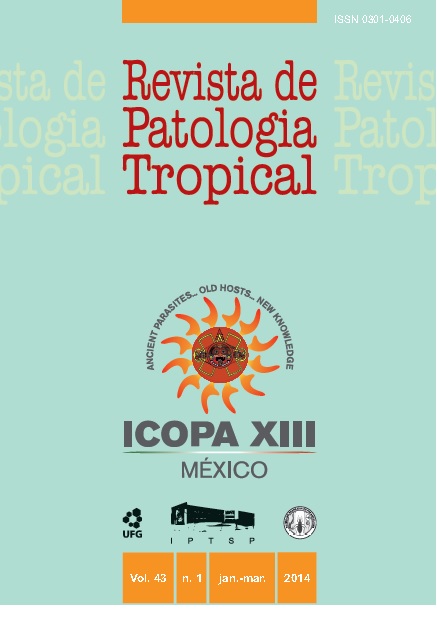CONTRIBUTION TO THE KNOWLEDGE OF THE HISTORY OF AMERICAN CUTANEOUS LEISHMANIASIS IN BRAZIL, POSSIBLE CASES IN SLAVES AT VILA DE VASSOURAS, RIO DE JANEIRO, BRAZIL, BETWEEN 1820 AND 1880
DOI:
https://doi.org/10.5216/rpt.v43i1.29366Keywords:
American cutaneous leishmaniasis, history, paleoparasitologyAbstract
In Brazil, American cutaneous leishmaniasis (ACL) was only confirmed in 1909 by Lindemberg, who found parasites in cutaneous lesions of people working in the countryside of São Paulo state that resembled Leishmania tropica, a variety that affects the Old World. Gaspar Vianna, considered it as a different parasite to L. tropica and christened it Leishmania braziliensis, thus determining the etiological agent of ACL. Despite its importance on the world, there are still questions about its origin and spread. This paper aims to demonstrate the possibility of the existence of ACL in the town of Vassouras RJ- in the early XIX century, a period prior to that considered as the arrival of the disease in southeastern Brazil. The work was performed by analysis of postmortem inventories held at the Historical Documentation Center in this city.Downloads
Downloads
Published
How to Cite
Issue
Section
License
The manuscript submission must be accompanied by a letter signed by all authors stating the full name and email address, confirming that the material has not been published or is under consideration for publication elsewhere, and agreeing to transfer copyright in all media and formats for Journal of Tropical Pathology. The authors will not be paid for published articles. They are solely responsible for the content of those articles, even if the Editor holds the right to adjust them to the norms of the journal.
The reviewers will not be paid for the peer review process.

